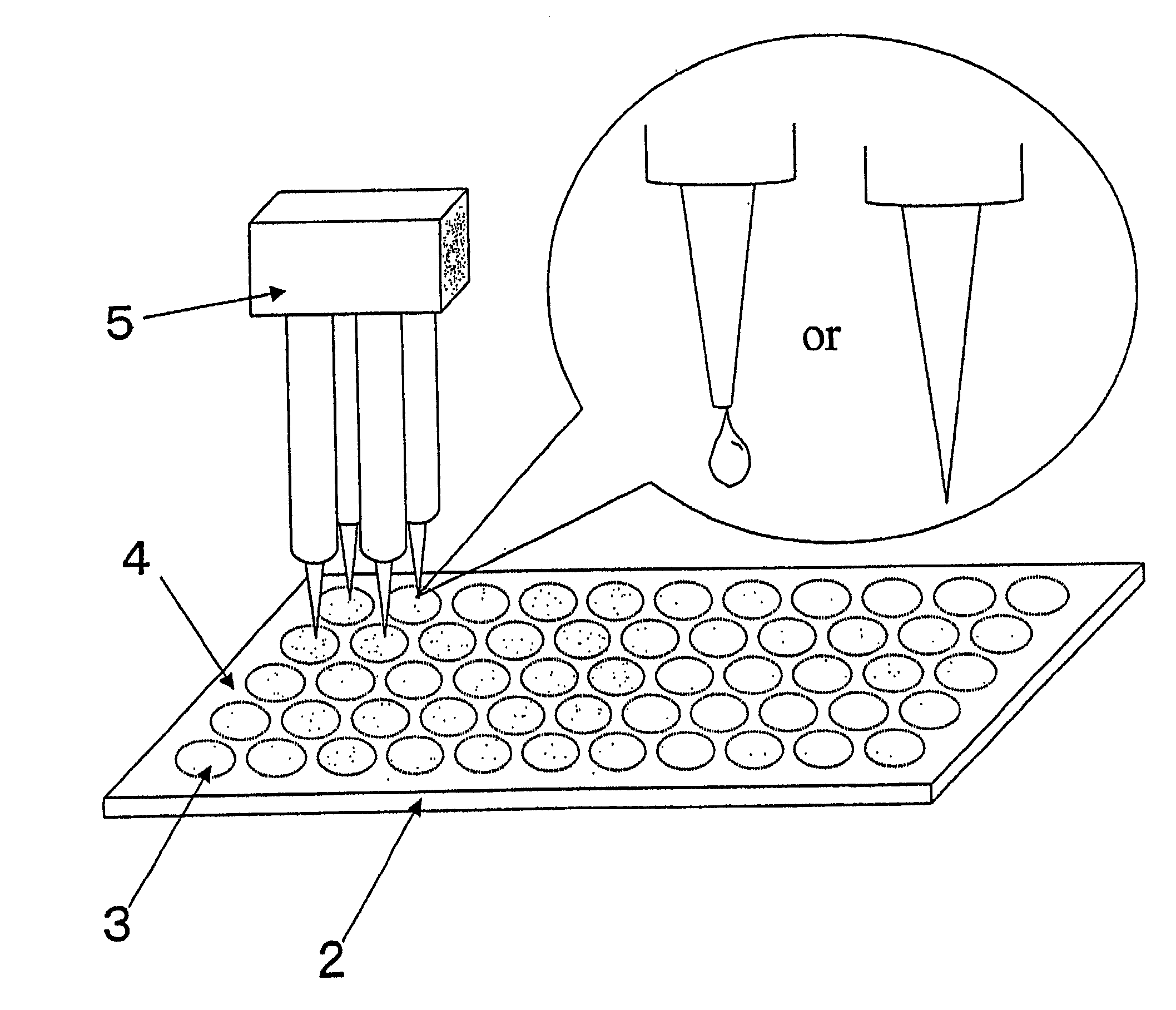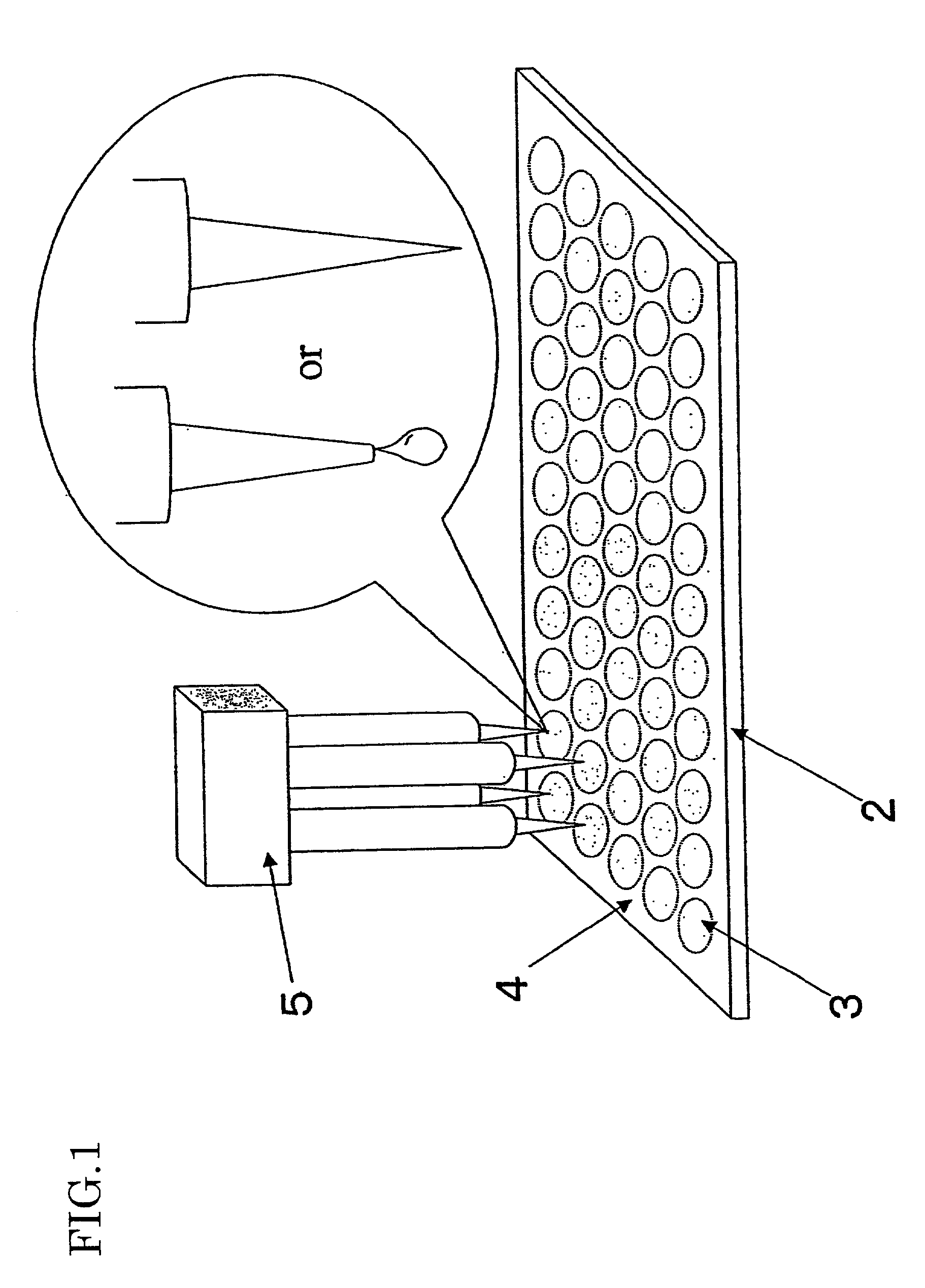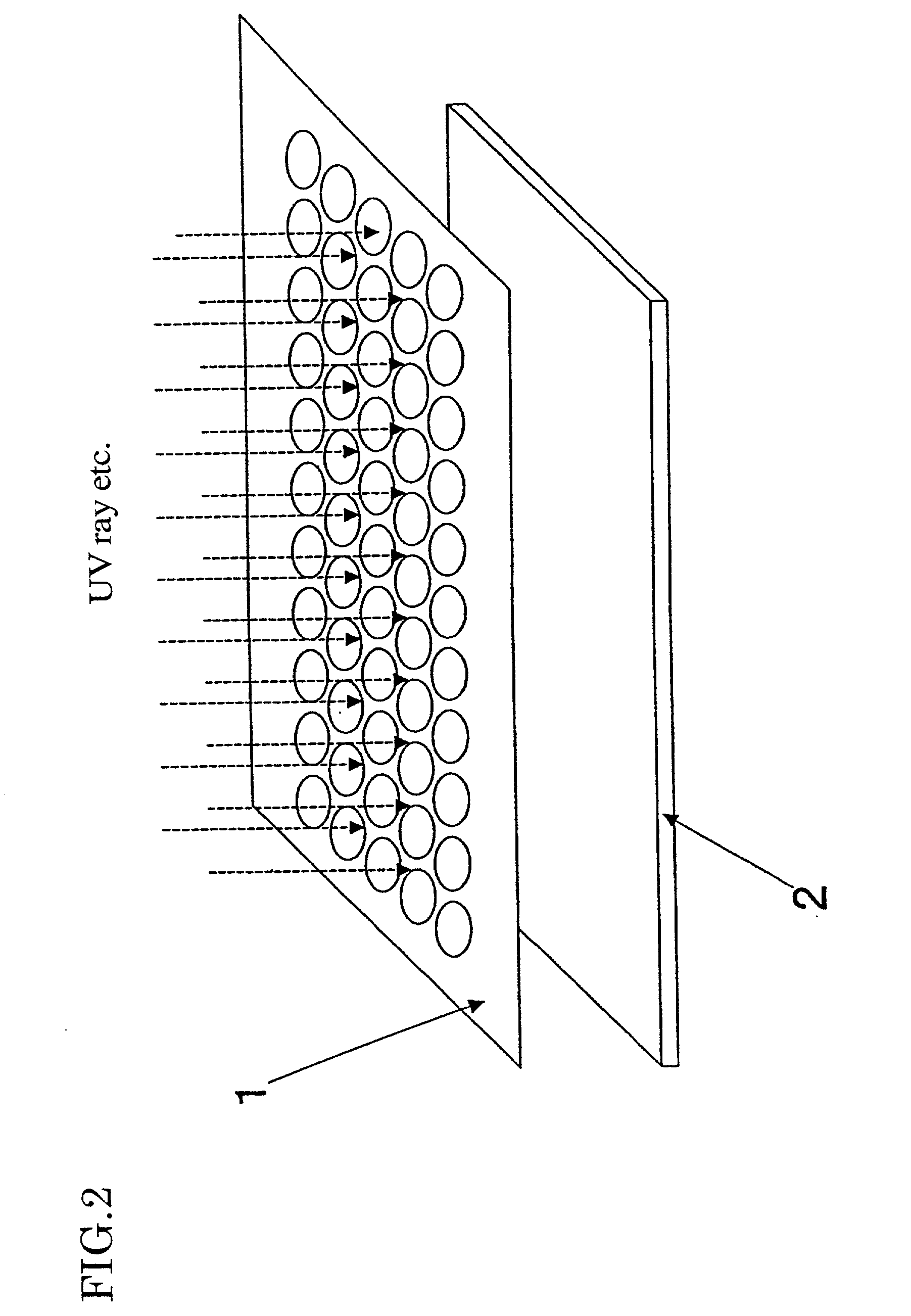Microarray and microarray substrate
a technology of microarrays and substrates, applied in the field of microarrays and microarray substrates, can solve the problem of taking a lot of time and effort to operate the glass machining operation
- Summary
- Abstract
- Description
- Claims
- Application Information
AI Technical Summary
Benefits of technology
Problems solved by technology
Method used
Image
Examples
Embodiment Construction
[0019] In the following, a preferred embodiment of the present invention will be explained in detail with reference to the attached drawings.
[0020] FIG. 1 is a view showing a configuration of a microarray according to an embodiment of the present invention. A microarray 2 of which substrate is a slide glass has a hydrophilic region 3 where the surface is hydrophilic and a probe DNA is fixed, and a hydrophobic region 4 where a probe DNA is not fixed and the surface is hydrophobic, around the hydrophilic region 3. In this way, the hydrophilic region 3 and the hydrophobic region 4 are selectively provided on the surface of the microarray 2, and the probe DNA is fixed in the hydrophilic region 3. Therefore, when a solution containing the probe DNA is dropped by a spotter 5, the solution spreads in the hydrophilic region 3 while being prevented from further spreading by the hydrophobic region 4. As a result of this, it is possible to arbitrarily determine the shape of the spot, which is ...
PUM
| Property | Measurement | Unit |
|---|---|---|
| Shape | aaaaa | aaaaa |
| Hydrophilicity | aaaaa | aaaaa |
Abstract
Description
Claims
Application Information
 Login to View More
Login to View More - R&D
- Intellectual Property
- Life Sciences
- Materials
- Tech Scout
- Unparalleled Data Quality
- Higher Quality Content
- 60% Fewer Hallucinations
Browse by: Latest US Patents, China's latest patents, Technical Efficacy Thesaurus, Application Domain, Technology Topic, Popular Technical Reports.
© 2025 PatSnap. All rights reserved.Legal|Privacy policy|Modern Slavery Act Transparency Statement|Sitemap|About US| Contact US: help@patsnap.com



